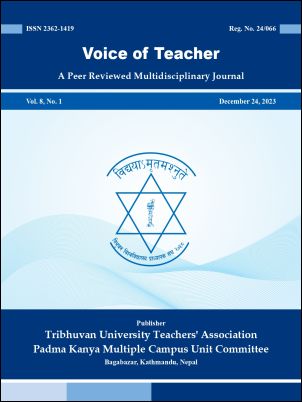Corruption and its Implications for Politics in South Asian Countries
DOI:
https://doi.org/10.3126/vot.v8i1.60863Keywords:
Corruption, democracy, governance, International bodies, Political leader, Political partiesAbstract
This study measures corruption using survey data, newspaper reports, court records, anti-corruption agency records, and other sources. Corruption and problems with the government have been significant problems in South Asia since the early 1980s. The Corruption Perception Index (CPI) from Transparency International is recommended because it is a “robust” indicator that looks at many different ways to measure political corruption in each country. The root causes of corruption in South Asian countries, however, are a monopoly of government-controlled institutions, excessive regulations, convoluted tax and licensing systems, numerous government departments with opaque bureaucracies and discretionary powers, and a lack of transparency in laws and procedures. Tax evasion, which helps black money accumulate and lowers public morale, has a substantial negative impact on the economies and politics of South Asian nations. Since the 1980s, Pakistan, Bangladesh, India, and Bangladesh have all been officially charged with corruption. In addition, political rivals and the media frequently accuse the prime ministers of Sri Lanka and Nepal of corruption. In Bangladesh, Pakistan, and other South Asian countries, political bribery is widespread. In 2002, General Pervez Musharraf passed stringent election laws that forbade politicians convicted of a crime from seeking office. The rule’s detractors believe that applying it would prevent the civilian community’s two most influential political figures from challenging the military administration in elections later this year.




